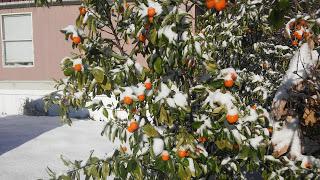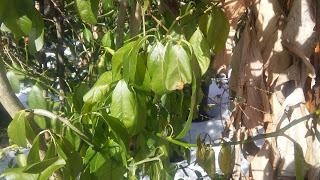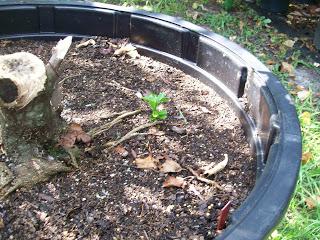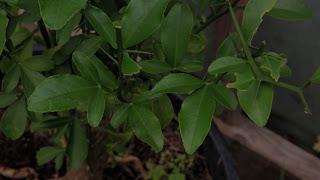I have received many e-mails, phone calls, and messages on Facebook asking if the citrus trees are going to be okay here in Charleston? The best answer I can give them, maybe. Some of it depends on whether the cold weather we had prior to this long cold/snow spell was enough to get them to go into their semi-dormancy. Another factor will be if the tree was healthy going into all of this.
Here is a list of what to possibly expect, what is happening, and what you should and shouldn't do.

Freeze damage on citrus trees occurs when the water inside the fruit, leaves, twigs, and wood
of a tree freezes rupturing the cell membranes. Unlike deciduous trees which protect
themselves from the cold by shedding their leaves in the fall and entering a dormant state,
citrus trees continue growing year-round. Extended periods of cool weather prior to a
freeze may allow a citrus tree to prepare, by going into a semi-dormancy. This is why sharp freezes following warm weather are more damaging than gradual temperature changes. Virtually all
freezes will cause damage of some kind. Regardless of what steps you take, there are
times when nothing you have done helps and your citrus is damaged by any freezes. However,
as long as the damage is not too severe, your tree can recover!
One of the keys to dealing with freeze damage is not to do something right away but to
wait awhile until the extent of the damage becomes apparent. In some instances, twig and
branch death from a severe freeze can continue for as long as several months after an event. Act too soon and you run the risk of either pruning away parts of your tree that can recover on their own or missing parts that look healthy enough at first glance but are really fatally damaged.

The appearance of citrus leaves damaged by freezing can be a little deceptive in that
they can appear firm and green at the outset. It is only later, as they thaw, that they
soften and droop, very much like the picture above. In instances where the damage is not severe, freeze-damaged leaves can recover. However, if the damage is fatal, the leaves will lose their structure completely, dry out and fall.While alarming, leaf fall alone does not indicate tree
death. If the wood remains healthy, the tree will recover and put out new growth in the
spring. As for twigs, the damage will almost invariably result in leaf death. In
the case of serious damage, the leaves will dry out but may stay attached for a time,
several weeks in some cases. If the twig is not badly damaged, the leaves will
fall more rapidly.
Signs of freezing damage in branches and trunks include the loosening and splitting of
bark. Patches of damage may appear oozing canker-like areas, occasionally mistaken for
the disease gummosis. Keep an eye out for this, especially being that it looks like it will be a quick warm up.
The first step in the pruning process is to wait until late spring or the summer following the winter the damage occurred. This will give you time to assess the damage. Many times the dead wood on a twig or branch will become a grayish color, that is an easy way to tell where to prune.
In addition, freeze-damaged trees occasionally put out a false start of new growth in the
early spring which soon dies back. What is happening here is, the damage is farther down the branch than expected. It warms up and the leaves want to start flushing out. The stored energy between the damaged branch and the growth tip is quickly used up and it can't receive any deliveries from the root system, so it dies. Delaying pruning until after this could occur will save you time and energy.

In very severe cases, a citrus tree may be damaged all the way to the ground. In such
cases, the root area may still put out new growth and the tree may, in time, recover. The above picture shows that, what I thought was a completely gone tree, sent a new shoot up from the roots. I knew this tree was on its own roots, so I allowed it to grow and be prosperous again. It took about 3 years before I saw fruit.
However, if the original tree was grafted and the tree is killed off below the graft, any
resulting new growth will be of the variety of the rootstock and not of the graft or
scion. It will be up to you to decide whether to re-graft, allow the rootstock to
continue growing or start over again. Be very observant of the leaves that come up, if they look like this:

It is either Poncirus trifoliata or some hybrid of Poncirus. The fruit will be edible, just not really tasty.
If you have any doubt as to whether your citrus will come back or not, time is the only thing that will tell. If you have any questions, please feel free to comment on this article or any of my others.
If you want to ask me anything in an e-mail or send me pictures, you can do that via this address [email protected].
You can follow me on Facebook.
Or touch base with me on my new Website
Happy Growing!
Darren

